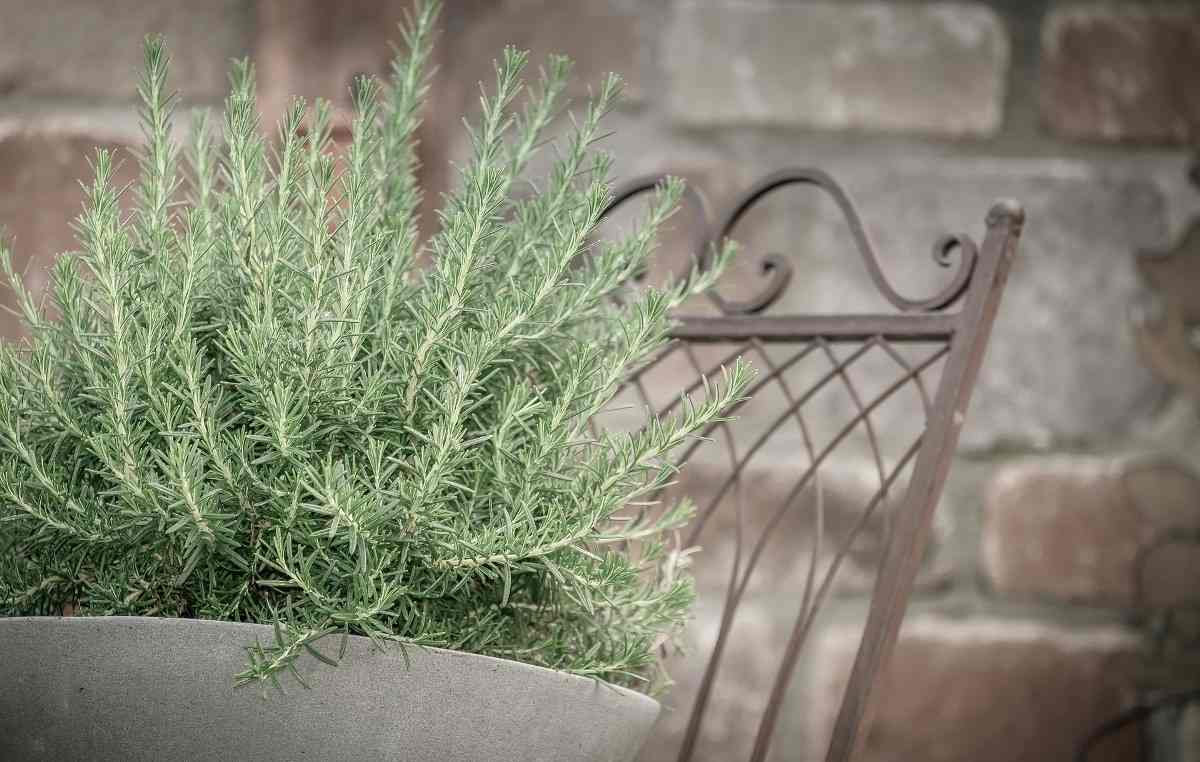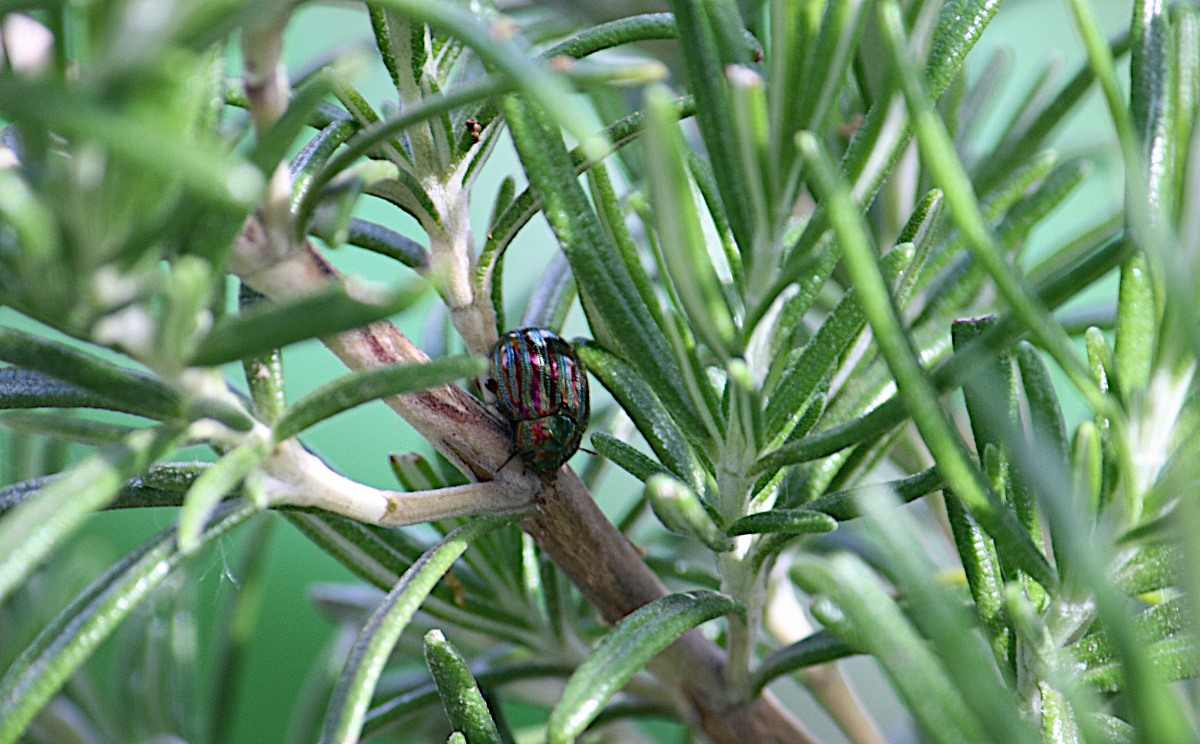Introduction to Growing Organic Rosemary in Containers
Rosemary (Rosmarinus officinalis) is a savory kitchen herb with a pungent flavour and attractive leaves. Growing Rosemary in containers is surprisingly simple and you can use the herb to add flavour and variety to several culinary dishes. It is a highly aromatic herb which is one of the easiest plants to grow. In this article we also discuss the below topics;
- How long does Rosemary take to grow
- Is Rosemary a good indoor plant
- Why does my Rosemary keep dying
- Does Rosemary need sunlight
- Rosemary plants growing tips
- How do you care for potted Rosemary
- How often do you water Rosemary in pots
- How do you encourage Rosemary to grow
- How fast does Rosemary grow
- Growing Rosemary kitchen garden
A Step By Step Guide to Growing Organic Rosemary in Containers
Rosemary is a small evergreen plant of the mint family (Lamiaceae), the leaves of which are used to flavour foods. Rosemary is a perennial shrub and usually grows to about 1 meter in height, though some plants can reach up to 2 meters tall. Rosemary plant care is easy. When growing Rosemary plants, provide them with well-drained, sandy soil and at least 6 to 8 hours of sunlight. This hardy plant does not require too much care and maintenance. All that the Rosemary plant needs full sunlight and partial shade. If you are planning to grow Rosemary indoors, make sure that the pot is kept near the brightest window of your house.
Different Rosemary Varieties
Some common Rosemary plant types are;
Arp Rosemary – Arp Rosemary is a very cold hardy shrub. It has a stiff upright growth habit and a mid-spring display of light blue colour flowers.
Creeping Rosemary – Creeping Rosemary is a perennial creeping variety. It is perfect for containers and hanging baskets, this trailing herb doesn’t make over 2 feet tall.
Joyce de Baggio – Also known as golden Rosemary, it’s compact and small. The leaf colour changes to a beautiful bright yellow shade with the season. ‘Joyce de Baggio’ also known as golden rain or golden Rosemary is indeed somewhat gold in colour. Leaves are bright yellow in the spring and fall and become a dark green during the summer.
Pinkie – Pinkie Rosemary is a woody perennial with small, narrow leaves and exquisite pink flowers. It is an excellent companion plant for roses, it bears pink flowers.
Spice Islands Rosemary – Spice Islands Rosemary is a very flavorful herb that grows as an erect, four-foot shrub that blossoms with dark blue flowers in the late winter and early spring.
Some of the most flavoured varieties which are best for cooking are Miss Jessup, Tuscan Blue, and Spice Island.
Organic Soil Preparation for Growing Rosemary in Containers
Rosemary requires a good quality commercial potting mixture with ingredients such as fine pine bark or peat moss with vermiculite or perlite. It grows best when the soil surrounding its roots can trap a minimal amount of water and keep the air circulating smoothly underground.
The Standard Mix is 2/3 Regular Potting Soil + 1/3 Perlite
The simplest mix you can use is an adjusted regular potting soil, which is one of the most popular soil mixes for Rosemary used by gardeners. Any high-quality potting soil is well-drained but not enough for it to help grow drought-tolerant plants. Growing Rosemary plant in unmodified potting soil has decidedly mixed outcomes.
The gardeners fail to keep the herb alive when using regular potting soil alone, although others have managed to have their Rosemary thrive in such a soil. Since regular potting soil tends to be inadequate on its own when it comes to keeping Rosemary alive, some gardeners prefer adding perlite to it. The magic of perlite is hidden in its ability to flush excess water out, without being a hydrophobic material. A hydrophobic material is one that doesn’t let water enter in the first place, which is something you do not want for your Rosemary plant. Mixing one part perlite to 2 parts potting soil creates the standard mix that you can use to grow your Rosemary.
Light Requirement for Growing Organic Rosemary in Containers

To keep Rosemary happy, give it 6 to 8 hours of full sunlight each day. When growing Rosemary indoors, place it in a south-facing window for bright light, but don’t let it get too hot.
Most people aren’t aware that the lack of sunshine is the common reason for a Rosemary plant growing indoors to die. The plant is unable to produce enough energy to stay alive on this amount of weak light and simply dies. Once your Rosemary moves indoors, make sure that you place this plant in the brightest window in your house, which is normally a south-facing window. If your Rosemary plant is not getting at least 6 to 8 hours of light a day, place a lamp with a fluorescent light bulb as close as possible to the plant to supplement the sunlight.
Containers Size for Growing Organic Rosemary
Growing Rosemary in a pot with a diameter of at least 12 inches allows enough space for the roots to grow. Be sure the container has a drainage hole because Rosemary grown in containers will rot in soggy and poorly drained soil. The easiest method to grow Rosemary in a pot is to start with a small bedding plant from a garden center or nursery, as Rosemary is difficult to grow from seed. Plant the Rosemary at the same depth it is planted in the container since planting too deeply may suffocate the plant.
Pot size depends on the type of Rosemary you’re growing. You can grow trailing Rosemary varieties in smaller pots, whereas, upright Rosemary plants require medium to large pots. You can begin with 6 to 8 inches deep pot and once the plant outgrows it, shift it to a 12 inches deep pot. While any pot made from any material is fine for growing Rosemary, terra-cotta pots are slightly better as they readily absorb excess moisture in the soil.
The Process of Growing Organic Rosemary in Containers

There are three main ways of growing Rosemary – from seed, from transplants and cuttings. The technique you choose to use will impact how long it takes Rosemary to reach maturity. Also, it will impact how much care and attention it will need along the way.
1. Growing Rosemary from Seed
For the average gardener, Rosemary is difficult to grow from seed. This is due to the herb’s long germination time about 10-25 days and the time it takes before the plant is ready to be harvested (up to two years). However, many gardeners find growing their Rosemary is well worth the time and effort.
To speed up the time it takes Rosemary to sprout, start your seeds 3 months before warm weather comes to your area. Before planting, be sure to soak the seeds for at least 6 hours. This softens the seed coat and encourages them to sprout faster. Sow the Rosemary seeds indoors under a warm light and be careful not to overwater them. Even with these precautions, you should expect a low germination rate for your seeds.
2. Growing Rosemary from Transplants
To speed up the Rosemary growing procedure, you can buy your Rosemary as transplants from a garden supply store. Make sure to purchase the hardiest looking Rosemary plants and ease their transition into the ground to prevent them from getting stressed. Another option is to plant Rosemary in containers that can be taken inside during the worst of the winter. Because container-grown Rosemary can still reach over 3 feet tall, it’s important to ensure you have big enough pots for your plants. Once the danger of heavy frost is over in the spring, you can bring Rosemary back outside.
3. Growing Rosemary from Cuttings
For most people, the easiest method to grow Rosemary is to take a cutting from a mature plant. The best time of year to take a cutting is in the late spring when plenty of new plant growth is starting to show on their stems. Use a sharp knife to take a 3-inch cutting just below a leaf joint and trim the bottom inch of the cutting to remove any leaves. Fill a 3-inch pot with potting mix and insert one to two cutting in each pot. Water throughout and cover with a plastic bag to trap in heat and moisture. Then, put your cutting in a place where it can get natural light, like a window out of direct sunlight. Once the cuttings have fully rooted (about 8 weeks) they can be planted outside.
Tips to Grow Organic Rosemary in Containers
Some tips to keep your Rosemary plant healthy;
- Grow Rosemary plant in a spot with full sun and loose, well-drained soil.
- Plant Rosemary when it’s appropriate for your climate. Regions with cold winters can plant in spring, while warmer areas can plant in the fall season.
- Grow in a sunny location. Rosemary thrives in 6 to 8 hours of direct sun in the summertime.
- Water when the soil feels dry. Once established, the Rosemary plant likes to stay on the dry side. Then, allow the top inch of soil to dry out between watering, and water thoroughly.
- Re-pot as the plant gets larger and the plant roots fill the container. A Rosemary plant that grows in a container can reach about 1 to 3 feet high. Just keep transplanting to a larger container when the plant roots fill the pot.
- Prune Rosemary frequently. Prune the Rosemary plant after it flowers to keep it compact.
Rosemary Container Care
- Caring for Rosemary grown in containers is easy. Proper watering is the key to growing potted Rosemary, and the best way to determine if the plant needs water is to insert your finger into the soil. If the top 1 to 2 inches of soil feels dry, and it’s time to water.
- Water the Rosemary plant deeply, and then let the pot drain freely and never let the pot stand in water.
- Rosemary in pots doesn’t require fertilizer, but you can use a dry fertilizer or a dilute solution of a water-soluble liquid fertilizer if the plant looks pale green or growth is stunted. Again, use care, as too much fertilizer may damage the Rosemary plant. Too little fertilizer is always better than too much. Always water the Rosemary plant immediately after applying fertilizer. Be sure to apply fertilizer to the potting soil, not the leaves.
Organic Fertilizers for Growing Rosemary in Containers
- Rosemary is not a heavy feeder, but fertilizing in spring with a fish or kelp emulsion will get it off to a good start for the season. Periodic foliar sprays with the fish emulsion will keep it looking great.
- Apply the organic fertilizer to Rosemary growing outdoors in the spring and the late summer or early fall by sprinkling close around the base of the plant.
- Rosemary plants benefit from aged manure or garden compost, sprinkled around the base of the plant, cultivated lightly into the soil, and then watered well.
Watering and Mulching Requirements for Growing Organic Rosemary in Containers
Rosemary plant tends to be drought tolerant once it’s established, but plan to water your plants more often throughout the first year to stabilize it. Because Rosemary isn’t picky about the kind of soil it’s in, you don’t need too much fertilizer besides an annual spring infusion of fish emulsion or compost. This drought-tolerant plant requires less water. Too much water can harm the Rosemary plant. It is susceptible to root rot that may happen due to water clogging and wet soil. Hence keep Rosemary pot away from direct rainfall during the monsoon season.
Companion Planting and Rotation Considerations in Rosemary Plants
Rosemary plant is a great companion plant that does well with a wide variety of species. Planting Rosemary plants around cabbage, beans, sage, and carrots is especially helpful. Some gardeners even claim that Rosemary helps to deter carrot rust flies, bean beetles, and even cabbage moths.
- Starting Hydroponics Gardening At Home
- Vegetable Terrace Gardening – A Complete Guide
- Homemade Hydroponic Nutrient Solution Guide
- Terrace Gardening Advantages; Disadvantages
- How To Grow Bell Peppers (Capsicum) In Backyard
- Home Gardening Tools, and Their Uses
Organic Pests and Diseases Control for Growing Rosemary in Containers
You should not miss this: Growing Organic Thyme.

Care of the Rosemary plant extends to treating pests. If insects persist on the plant, spray them with a solution of about 1 tablespoon of dish soap in 1 gallon of water. Rinse Rosemary well before using it if you treated it with this dish soap solution. Rosemary doesn’t have too many problems with pests and diseases, but it tends to be a favorite feeding option of whiteflies, aphids, and spider mites. A non-toxic insect spray made from the soap can deter these pests.
Rosemary grown indoors is susceptible to powdery mildew, a fungus that thrives when plants don’t get good air circulation. You can counter this condition by keeping your Rosemary plants dry and well ventilated. Whitefly and spider mites will attack Rosemary plants. Monitor frequently and then apply organic pest controls if insects arrive. Damp conditions will encourage botrytis rot. Remove infected plants.
Common pests for indoor Rosemary plants are red spider mites, spittlebugs, aphids, and whiteflies. These pests suck on the Rosemary plants and cause the foliage to wilt and dry up. Inspect your plants frequently for pests and control with organic insecticidal soap. Plant diseases such as root rot, powdery mildew, and mould are all signs of too much moisture and poor air circulation. If Rosemary is infected with pests, use a houseplant pesticide to remove them. Then, Rosemary is a herb and it is mainly grown to be eaten, look for organic pesticides. One that is growing in popularity is neem oil, as it is effective against pests but is completely harmless to humans and pets. Although Rosemary resists most diseases, some cases of powdery mildew have been reported. To prevent the disease from spreading, check the plants regularly, and apply the proper fungicides when needed. You can reduce the incidence of diseases by pruning overgrown plants to improve air circulation within the Rosemary plants. Pruning also stimulates them to produce new shoots.
Rosemary is fairly resistant to pests. If spider mites, mealy bugs, or scales do appear, any organic or inorganic insecticide can be used. If the Rosemary plant has scales, an easy solution is to clip off and discard the infested plant tips; scales are sedentary insects. For mealybugs, spray the plants with water, pyrethrum soap, or a soap-based insecticide. Insects that suck plant sap are more prevalent in areas where too much nitrogen fertilizer has been applied. You can avoid most insect problems by fertilizing properly.
When and How to Harvest Rosemary
Harvest Rosemary stems to encourage more compact, bushier growth. Pinch or cut off about 3 to 6 inches of the stems throughout the plant as needed to encourage even growth.
Harvest Rosemary plant leaves anytime throughout the year for fresh use. Pick in the morning for the best flavour. Cut 3 to 4 inches from one branch rather than cutting 1/2 inch from several branches. To dry, tie the cuttings in small bunches and hang upside down in a well-ventilated, dark room.
In case if you are interested in this: Organic Mushroom Farming.